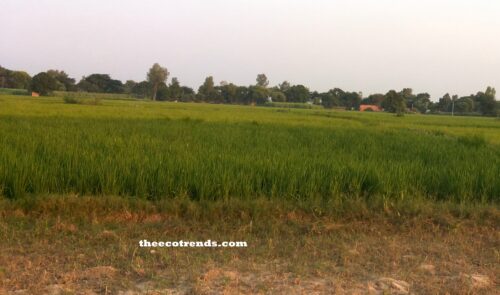The Underlying Causes of species loss include International Trade in animal body parts, timber, and traditional medicinal plants and their parts; population growth and poverty; and Bio invasion.
A. International Trade
Varieties of Biological Resources are in international demand today. To meet this international demand, illegal smuggling of these resources is done through illegal routes. Some species of plants and animals have been threatened, rare, endangered or critically endangered due to such practices. Several valuable species of plants and animals have become extinct due to these activities. The international trade in animal body parts is increasing rather rapidly due to their high prices in the international markets. Where possible, the trade of whole animals is also in full swing. Here are some examples.
The market price for the body parts of a single tiger is US$ 5 million,
The good quality dried sea horses sell for as much as US$1200 per kg in some areas of China,
According to the TRAFFIC, the annual trade of tortoises and river turtles in North East Asia accounts for about 300,000 kg of live animals. In economic terms, it accounts up to US$ 1 million.
The Tibetan Antelope Chiru, found in some of the harshest regions of Tibet and China, is hunted for its fine hair for making Shahtoosh Shawls. The price of one kg of Shahtoosh is around 60,000 rupees if translated from international currency.
It has been reported that Queen Elizabeth wore a Shahtoosh shawl to Prince Edward’s wedding and that actress Julia Roberts wore one during the premiere of her film The Runaway Bride. However, a ban on Shahtoosh shawls has been imposed since 1991. Chiru is now on the verge of extinction due to its brutal killing of fine hair.
According to an estimate by the Food and Agricultural Organization (FAO), from 4000 to 6000 species of medicinal plants are in the routes of international trade. About 30 per cent of the export of plant resources is done by the People’s Republic of China alone. Varieties of plants are in high international demand due to the high value of their wood. Some important examples are – the Asian Rattan Palm, the Wood’s Cycad
B. Population Growth, Urbanization and Poverty
The growth of the human population and urbanization are imposing degrading pressures on the existence of species in the following ways-
(i) These are causing encroachments into natural habitats,
(ii) These are leading to the conversion of natural habitats into human settlements,
(iii) The increasing population is causing an increase in the demand for food, which is met through the expansion of agriculture. This is done through the clearing of natural forests, reclaiming of wetlands or the fragmentation of vast areas of natural habitat,
(iv) Use hybrid seeds and agrochemicals like pesticides, fungicides, insecticides, rodents, hormones, etc.
Poverty is another underlying factor responsible for the world’s loss of species. The poor are frequently forced to occupy marginal lands and encroach upon fragile ecosystems. This is evident from the examples of Wetlands in Bangladesh, hill forests in India and Nepal, and Mangroves in Thailand, which are ecologically disturbed due to their occupation by the poor people for settlements and agriculture. This problem can be addressed by focusing on developing alternative livelihood strategies for the poor people who currently rely on protected natural habitats for their living.
C. Bio invasion
The process by which a new species is introduced into a habitat is called bio invasion. The new species introduced in the new habitat are called exotic or invasive species. These species are organisms usually transported by human beings from foreign areas. These species successively colonize native ecosystems. These have been a significant threat to native species because these species show predatory behaviour, cause changes in habitat and often disrupt the process of ecosystems. One example is the introduction of the Australian Brush Tail Possum, which caused a decline in the number of native birds in New Zealand.
D. Introduction of new species
The increasing applications of genetically engineered microorganisms and their establishments in natural habitats are causing potential risks to existing plants and animals. Some traits of genetically engineered microorganisms harm the species on which most natural organisms depend for survival. Secondly, the mixing of the genetic stock and the subsequent loss caused by this event, as well as the general competitive superiority of the genetically modified organisms, lead to the degradation of biodiversity in a region.




